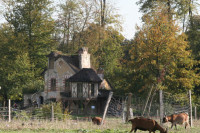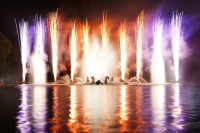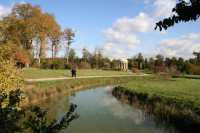Travel
French Renaissance and Classical Gardens: Chenonceau & Vaux le Vicomte (Part II)
In Part I you learnt how to recognize a Renaissance and a Classical French garden. Then the focus was on the beautiful garden of Villandry. In Part II the focus is on the Chenonceau and Vaux le Vicomte gardens.
Chenonceau
It is after a short walk through a majestic sycamore alley that one finally gets to see Chenonceau´s gardens and castle, just behind two imposing Sphinx. People come to the castle, known all over the world, for its gallery crossing the Cher river, and for its gardens.
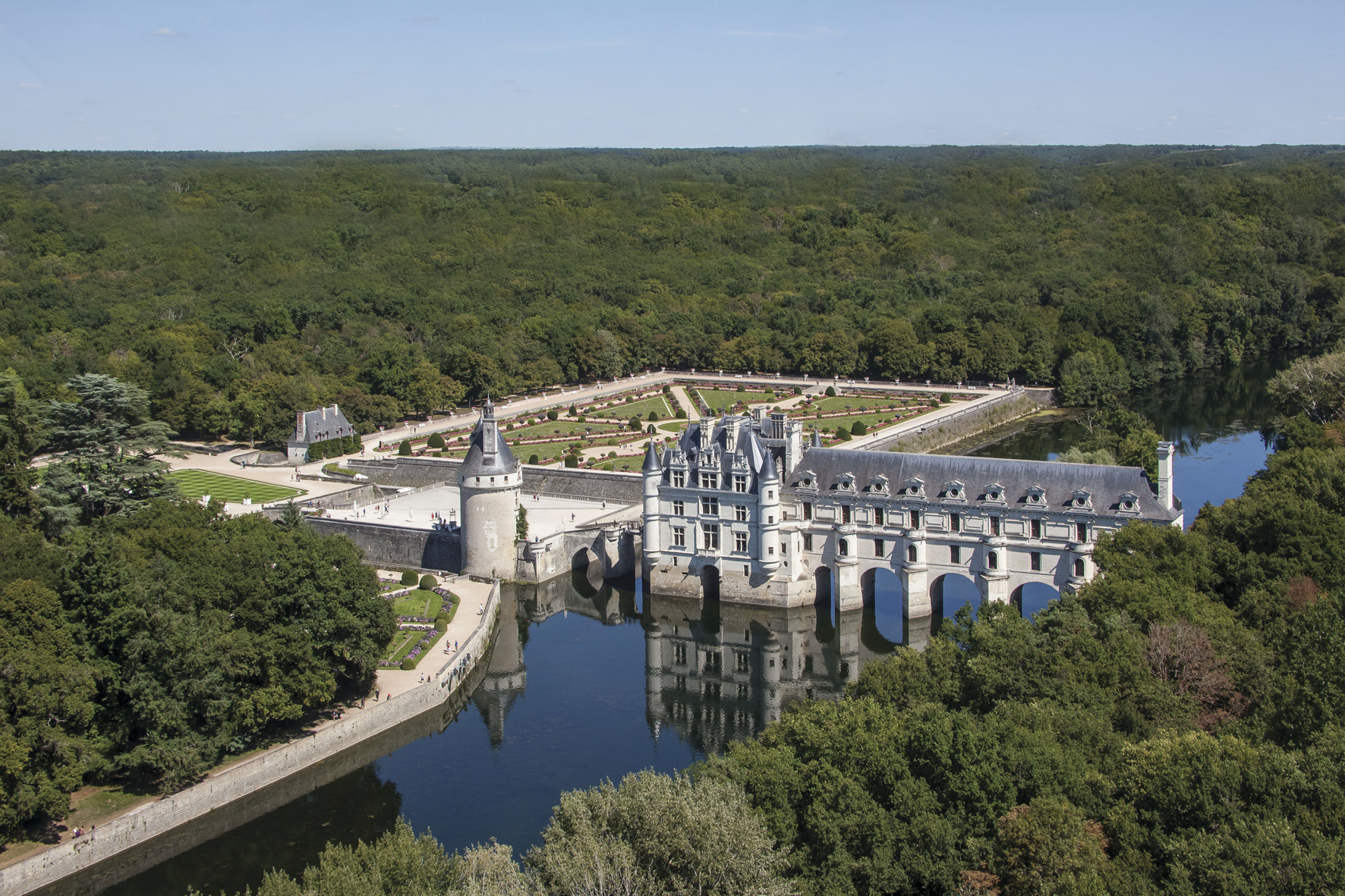
“château de Chenonceau @Marc Jauneaud”
The castle and its women
Once owned by six different women from Diane de Poitiers to Madame Pelouze, the Renaissance gardens are today the property of the Menier family. Chenonceau was built in 1513 for Thomas Bohier, who had a potager.
When Diane de Poitiers arrived she had the garden redone, as it was not big enough. Probably the work of Philibert Delorme, it took five years to finish. The most qualified people from the region delivered the best flowers and trees.
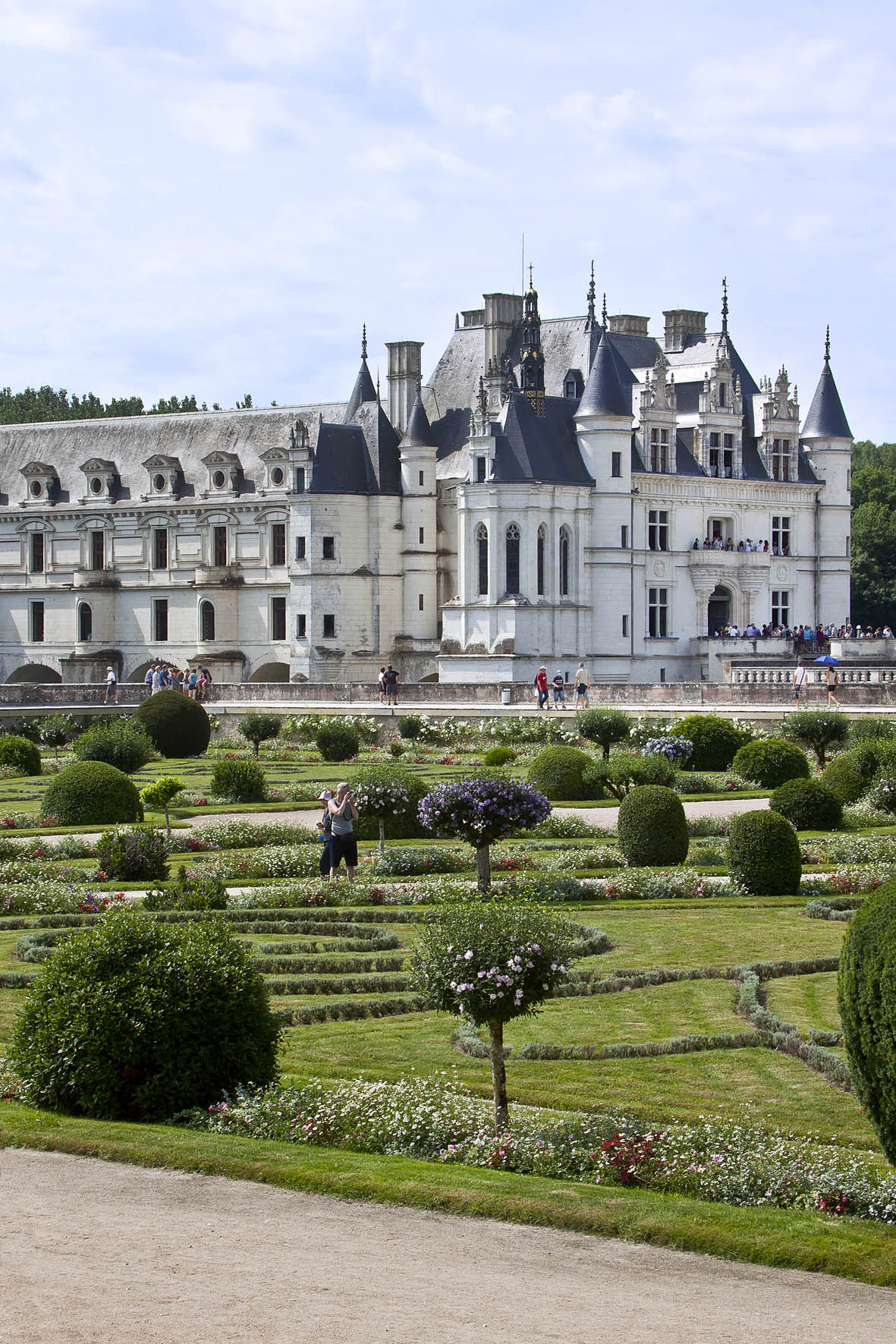
“château de Chenonceau @Dominique Coineau View of Diane de Poitiers garden
It is known as the Garden of Diane, made of eight triangle broidery parterres. Roses, flat flowerbeds, vases and a fountain make this garden, laid out on the right river bank, a magical one.
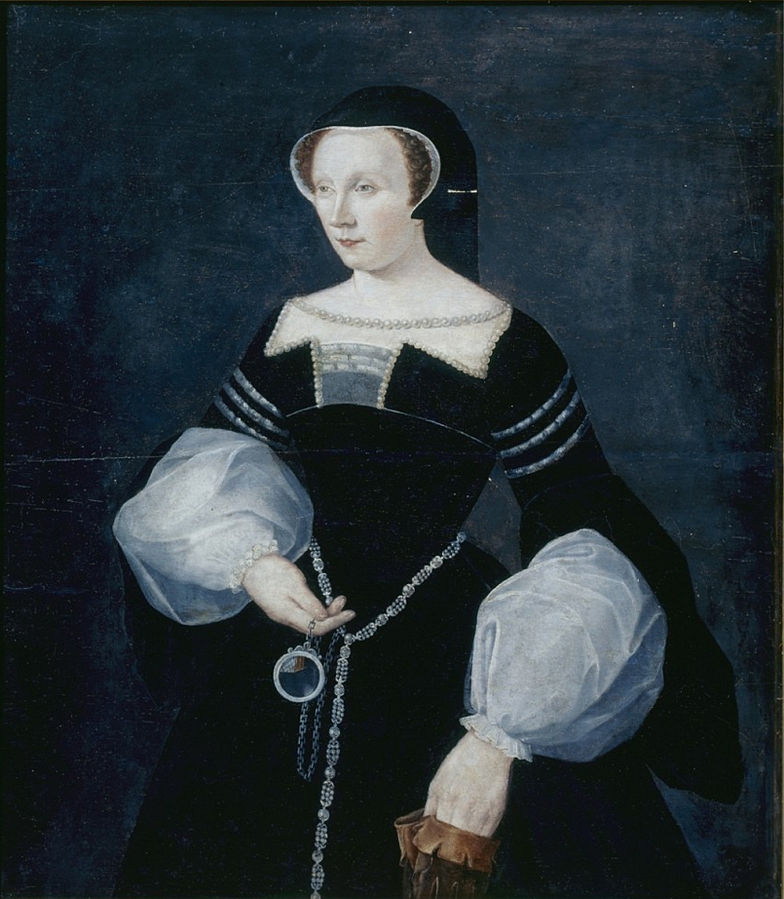
Portrait of Diane de Poitiers – Painter François Clouet (1510–1572)
Catherine of Medicis, a garden´s lover, chased away Diane after the death of her husband, King Henry II. She added her own garden on the left bank. Both gardens are separated by the Marques Tower, but Catherine’s garden is half the size of Diane’s garden. Designed by the well-known architect, Bernard Palissy, visitors can wander along flat flowerbeds, lavenders, blue myosotis and boxwoods.
Don’t miss the labyrinth, easily noticeable when you arrive. It was created for Catherine, then removed and recently restored.
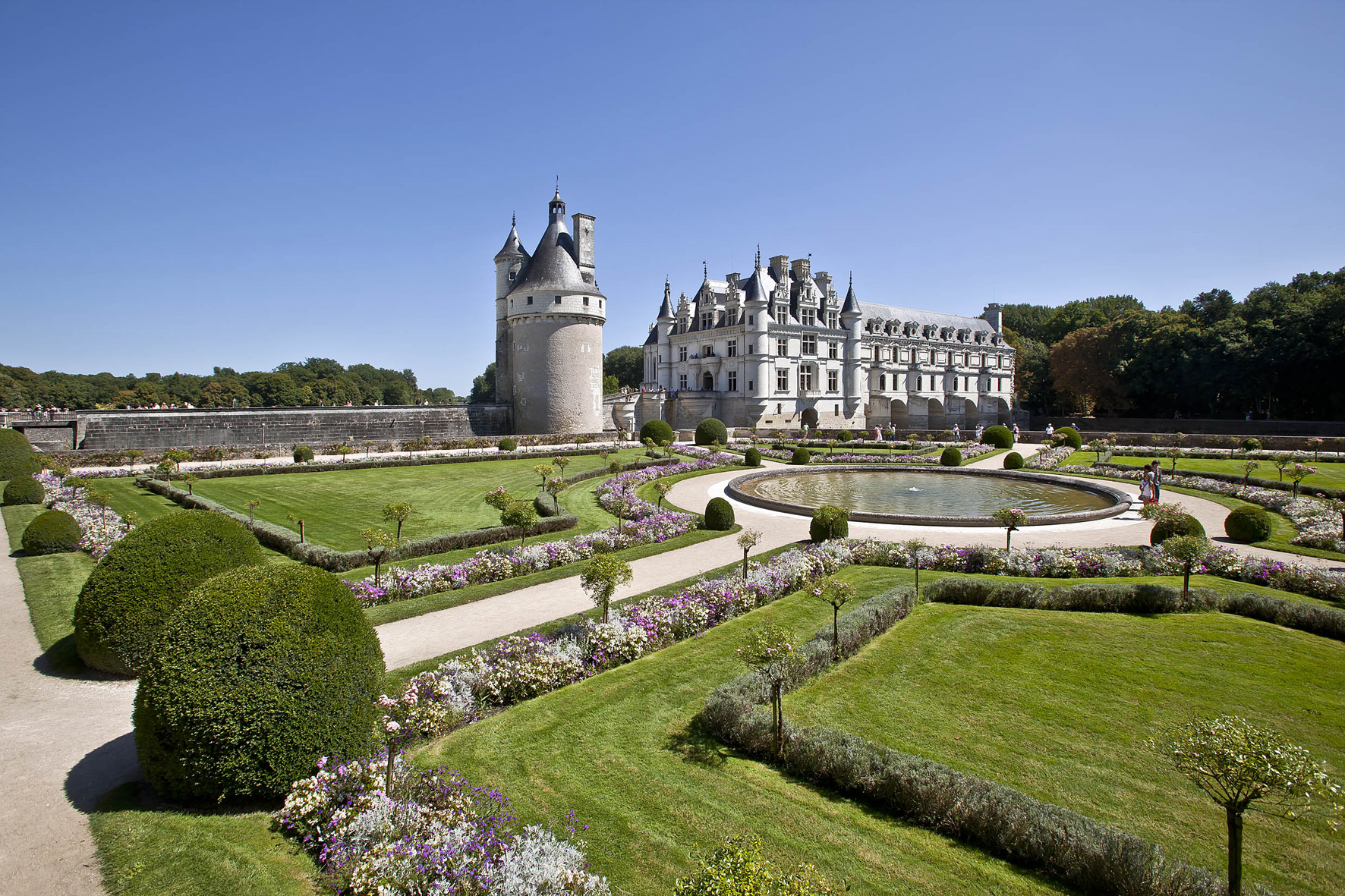
“château de Chenonceau @Marc Jauneaud” View from Catherine de Médicis garden
The castle from the 18th century to the present time
When Madame Dupin acquired Chenonceau in 1733, changes were made: fountains reappeared and new trees were planted in the main alley leading to the castle. Then, in the 19th century, the family Villeneuve turned the Renaissance gardens into an English garden, later restored by Madame Pelouze.
Chenonceau has been opened to the public since 1913. Beautiful bouquets, changed twice weekly, are left throughout the castle for decoration. About 130,000 plants are prepared in the potager for the gardens’ flowers and the bouquets decorating the rooms.
More information:
- The gardens are on the Cher river, 21 miles (35 km) east of Tours in the Indre and Loire department.
- Entrance fee for castle and gardens: 15 euros. You have to buy a pass for the castle/gardens. Free for children under 7.
- The gardens are open everyday from Friday July 2nd from 9:00 am to 7:00 pm
- For opening hours call 00 33 (0)2 47 23 44 06
- email the castle info@chenonceau.com
- For more check their site www.chenonceau.com
- Also contact the Tourist Office of Chenonceaux
1, rue Bretonneau 37150 CHENONCEAUX
Tel: 00 33 (0)2 47 23 94 45 or their website: - www.chenonceaux-blere-tourisme.com
Vaux le Vicomte
The Seine & Marne department is a good alternative for garden lovers. Not far from the estate of Fontainbleau and 31 miles (50 km) away from Paris, lies Vaux le Vicomte in the small village of Maincy. When one thinks of Vaux, the name of Le Nôtre immediately comes to mind.
The men who created the gardens
It all started when Nicolas Fouquet, Louis XIV finance superintendent, hired an amazing team to work on his castle and gardens. The three main men were André le Nôtre, the landscape gardener, Le Brun, the painter, and Le Vau, the architect. Vaux was very important in Le Nôtre’s career and good practice for his next projects. There, Louis XIV (the Sun King) noticed his talents. The jardins à la française`s style, born in Vaux, were recognized throughout the world and later copied by other monarchs.
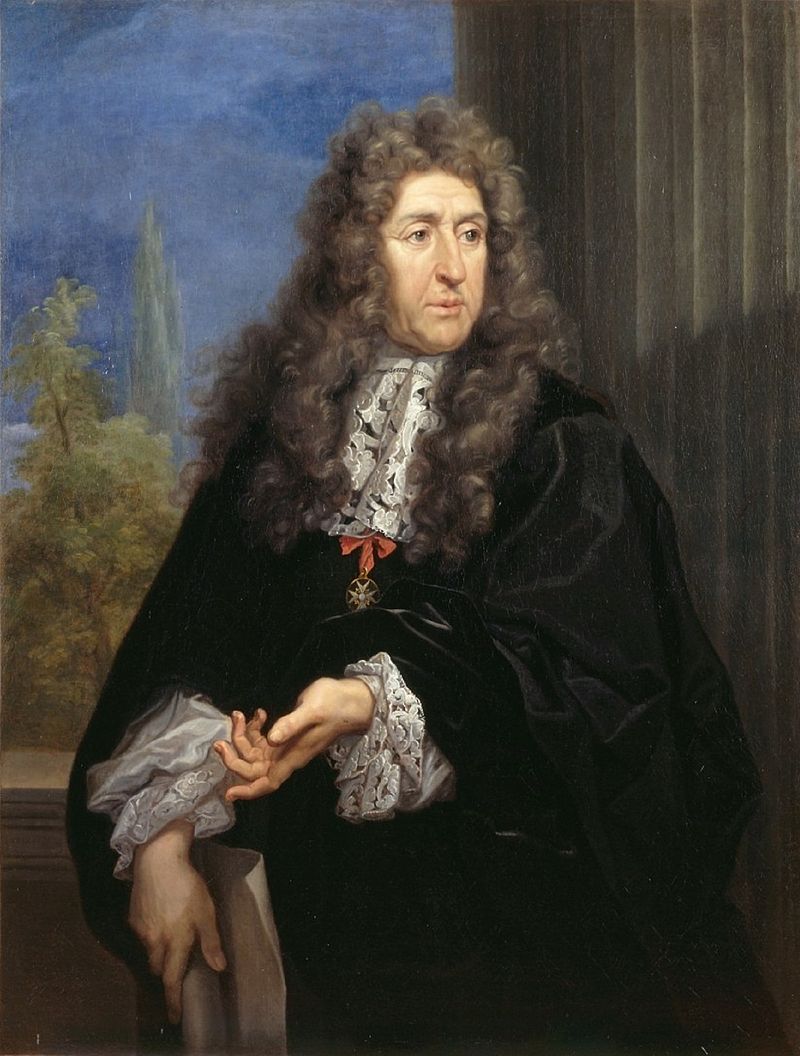
Carlo Maratta (1625–1713) Title Portrait of André Le Notre
The 33 hectares of formal gardens raised on terraces are elegant and well balanced and show Le Nôtre’s genius. Bringing order and harmony in the gardens was his obsession. He used bosquets (groves), alleys, broidery parterres, statues, fountains, a grotto and other elements to attain his goal. For him every axis, angle and line was important. Each detail made the most beautiful and ideal garden.
Le Nôtre used optical illusions everywhere he could such as large basins, cascades and a canal to make things appear closer. One has to wander throughout the gardens to really understand distances and notice things, which were indistinguishable from the castle.
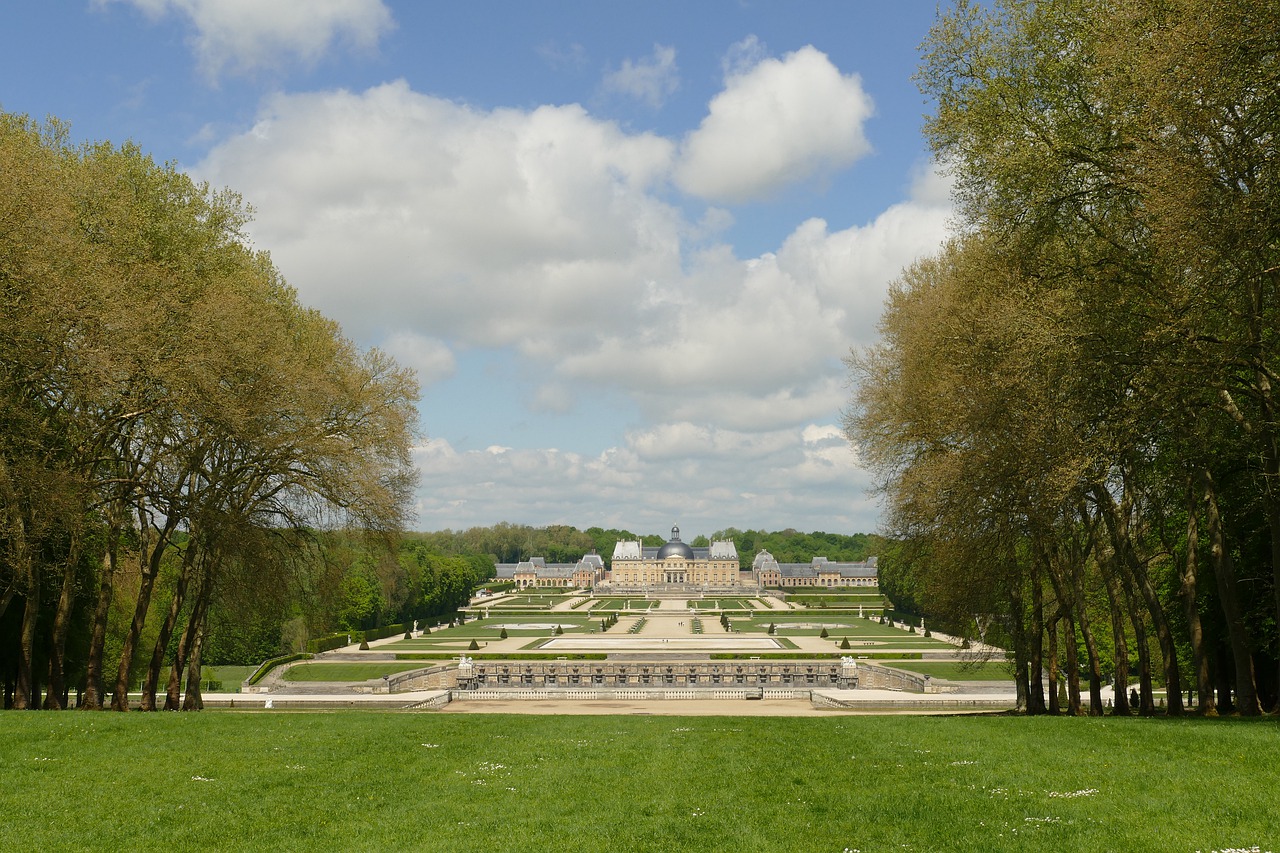
Image by Eveline de Bruin from Pixabay
The gardens, which had been started in 1656, were completed in 1661. Not long after the party when Fouquet showed his masterpiece, he was arrested and accused of embezzling funds; he was jailed for the reminder of his life. Left abandoned, Vaux le Vicomte was luckily restored late 1870’s and is now owned by the family de Vogüé. The gardens/castle almost have 300,000 entrances yearly.
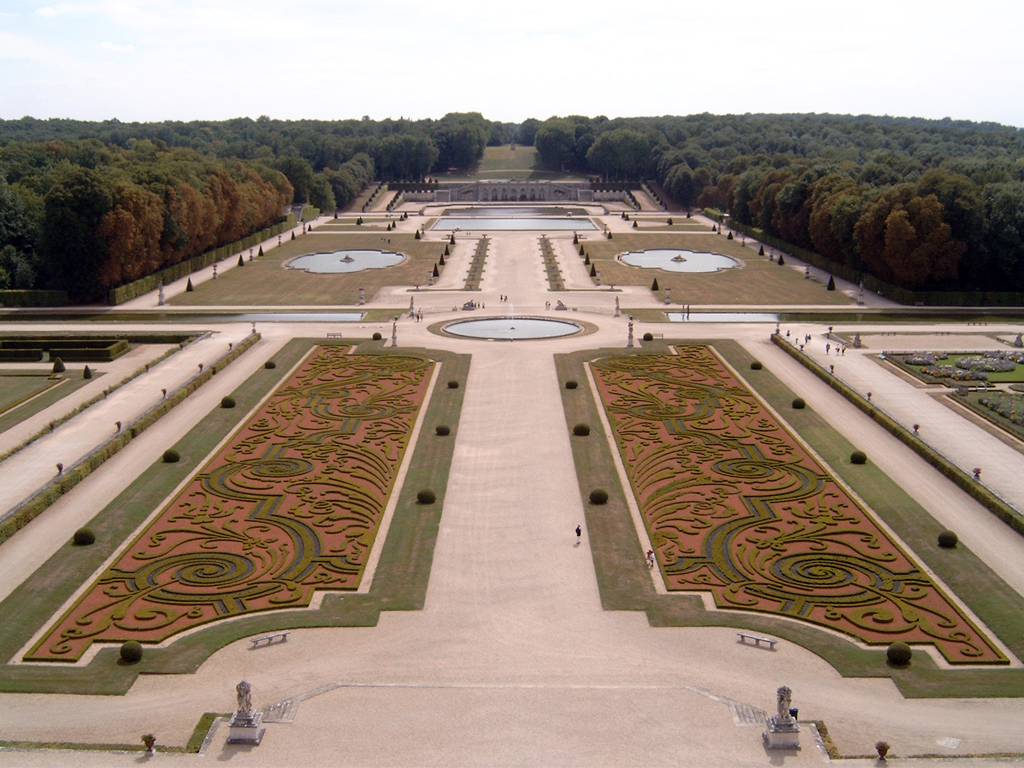
Thomas Henz / Photograph taken by Thomas Henz
More information:
- The gardens of Vaux le Vicomte are found in the small village of Maincy in the Seine et Marne department.
- Entrance fee for gardens, castle, exhibit: 16,90 euros. You need to reserve your tickets before your visit.
- Open from Wednesday to Sunday until October 3rd from 11 am to 6 pm.
- email the castle: to chateau@vaux-le-vicomte.com
- https://vaux-le-vicomte.com/en/
- Activities in the gardens: candlelight evenings and fountain shows

